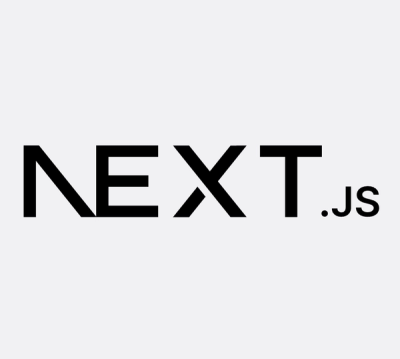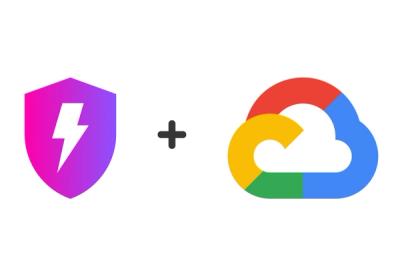
Security News
Next.js Patches Critical Middleware Vulnerability (CVE-2025-29927)
Next.js has patched a critical vulnerability (CVE-2025-29927) that allowed attackers to bypass middleware-based authorization checks in self-hosted apps.
@mux/mux-video-react
Advanced tools



<MuxVideo/> is a Mux-flavored React video component.
If you are familiar with using <video /> + Hls.js in your application, then you'll feel right at home with this React component.
If you're using npm or yarn, install that way:
yarn add @mux/mux-video-react
or
npm i @mux/mux-video-react
Then, import the library into your application with either import or require:
import MuxVideo from '@mux/mux-video-react';
or
const MuxVideo = require('@mux/mux-video-react');
Without <MuxVideo/>, if you want to use the browser built-in HTML5 video element for playback you would have to wire up Hls.js and Mux Data yourself.
<MuxVideo/> will automatically handle recoverable errors that happen during video playback. This is particularly handy for live streams that may experience disconnects.
<MuxVideo/> will use the optimial Hls.js settings for Mux Video so you don't have to worry about that. <MuxVideo/> will also periodically test new versions of Hls.js and upgrade to known stable versions so you don't have to worry about upgrading to a new version of Hls.js yourself.
Loading this library in the browser will register a custom web component for <mux-video>.
Now you are free to use this web component in your HTML, just as you would with the HTML5 <video> element.
const MuxVideoExample = () => {
return (
<div>
<h1>Simple MuxVideo Example</h1>
<MuxVideo
style={{ height: '100%', maxWidth: '100%' }}
playbackId="DS00Spx1CV902MCtPj5WknGlR102V5HFkDe"
metadata={{
video_id: 'video-id-123456',
video_title: 'Super Interesting Video',
viewer_user_id: 'user-id-bc-789',
}}
controls
autoPlay
muted
/>
</div>
);
};
playbackId: string: This is the playback ID for your Mux Asset or Mux Live Stream. The playback-id is the variable you may have used before to construct a .m3u8 hls url like this:https://stream.mux.com/{PLAYBACK_ID}.m3u8. For more, check out the Mux Docs.envKey: string: This is the environment key for Mux Data. Note that this is different than your API Key. Get your env key from the "Mux Data" part of your Mux Environments Dashboard. If undefined and you are playing a Mux Video asset, the environment will be inferred.

metadata: Object: This is an object for configuring any metadata you'd like to send to Mux Data. For a detailed discussion of the available metadata fields and what they represent, check out the Mux Data docs. A few high priority keys that you'll likely want to set are:
video_id: string: Your internal ID for the video.video_title: string: Title of the video player (e.g.: 'Awesome Show: Pilot')viewer_user_id: string: An ID representing the viewer who is watching the stream. Use this to look up video views for an individual viewer. If no value is specified, a unique ID will be generated by the SDK. Note: You should not use any value that is personally identifiable on its own (such as email address, username, etc). Instead, you should supply an anonymized viewer ID which you have stored within your own system.streamType: string: Enum value: one of "on-demand", "live" (HLS live stream), "ll-live" (low latency live). Not strictly required, but preferred so that <MuxVideo/> can make optimizations based on the type of stream.startTime: number (seconds): Set this to start playback of your media at some time other than 0.In addition, any props that you would use on a <video> element like poster, controls, muted and autoPlay are available and should work the same as they do when using a video element in react. One sidenote about autoPlay though -- read this to understand why that might not always work as expected.
By default <MuxVideo/> will try to use native playback via the underlying <video/> tag whenever possible. However, it can also instead use an in-code player as long as the browser supports Media Source Extensions. This includes MSE in Mac OS Safari.
If you prefer to use the in-code MSE-based engine (currently hls.js) whenever possible, then simply set the preferPlayback prop to mse.
<MuxVideo
playback-id="DS00Spx1CV902MCtPj5WknGlR102V5HFkDe"
metadata={{
video_id: 'video-id-123456',
video_title: 'Super Interesting Video',
viewer_user_id: 'user-id-bc-789',
}}
preferPlayback="mse"
controls
/>
By default <MuxVideo/> will try to figure out the type of media you're trying to play (for example, an HLS/m3u8 media source, an mp4, etc.) based the extension of the file from the src attribute's url. This allows <MuxVideo/> to determine whether it can/should use an in-code player or native playback. By way of example, the code below has an identifiable "mp4" extension, so <MuxVideo/> will rely on native playback via the underlying <video/> tag.
<MuxVideo
src="https://stream.mux.com/DS00Spx1CV902MCtPj5WknGlR102V5HFkDe/high.mp4"
metadata={{
video_id: 'video-id-123456',
video_title: 'Super Interesting Video',
viewer_user_id: 'user-id-bc-789',
}}
controls
/>
Sometimes, however, your src URL may not have an identifiable extension. In these cases, we recommend relying on the type attribute, similar to the <source/> tag's type attribute. Below is an example of explicitly declaring the MIME type for an HLS/m3u8 media source:
<MuxVideo
src="https://stream.notmux.com/path/to/an/hls/source/playlist"
type="application/vnd.apple.mpegurl"
metadata={{
video_id: 'video-id-123456',
video_title: 'Super Interesting Video',
viewer_user_id: 'user-id-bc-789',
}}
controls
/>
Or, for convenience, we also support the shorthand type="hls:
<MuxVideo
src="https://stream.notmux.com/path/to/an/hls/source/playlist"
type="hls"
metadata={{
video_id: 'video-id-123456',
video_title: 'Super Interesting Video',
viewer_user_id: 'user-id-bc-789',
}}
controls
/>
Mux supports a number of query parameters on HLS playback URLs. Most commonly the token= param is used for signed URLs.
In order to use token= -- or any other query params, pass them through with the playbackId prop:
playbackId="DS00Spx1CV902MCtPj5WknGlR102V5HFkDe?token=jwt-signed-token"
<MuxVideo/> with TypeScript?Yes! In fact, @mux-element/mux-video-react is written entirely in TypeScript and provides a definitions file automatically (no additional installs needed).
No, you do not. The way Mux delivers HLS video is compliant with the HLS spec. Any video player that supports HLS will work with Mux Video.
You sure can! Instead of passing in playbackId="" prop, pass in src="" with an HLS url. You can still use envKey="" to get all the features of Mux Data with your non-Mux video.
FAQs
A custom mux video element for React that Just Works™
The npm package @mux/mux-video-react receives a total of 13,169 weekly downloads. As such, @mux/mux-video-react popularity was classified as popular.
We found that @mux/mux-video-react demonstrated a healthy version release cadence and project activity because the last version was released less than a year ago. It has 1 open source maintainer collaborating on the project.
Did you know?

Socket for GitHub automatically highlights issues in each pull request and monitors the health of all your open source dependencies. Discover the contents of your packages and block harmful activity before you install or update your dependencies.

Security News
Next.js has patched a critical vulnerability (CVE-2025-29927) that allowed attackers to bypass middleware-based authorization checks in self-hosted apps.

Security News
A survey of 500 cybersecurity pros reveals high pay isn't enough—lack of growth and flexibility is driving attrition and risking organizational security.

Product
Socket, the leader in open source security, is now available on Google Cloud Marketplace for simplified procurement and enhanced protection against supply chain attacks.